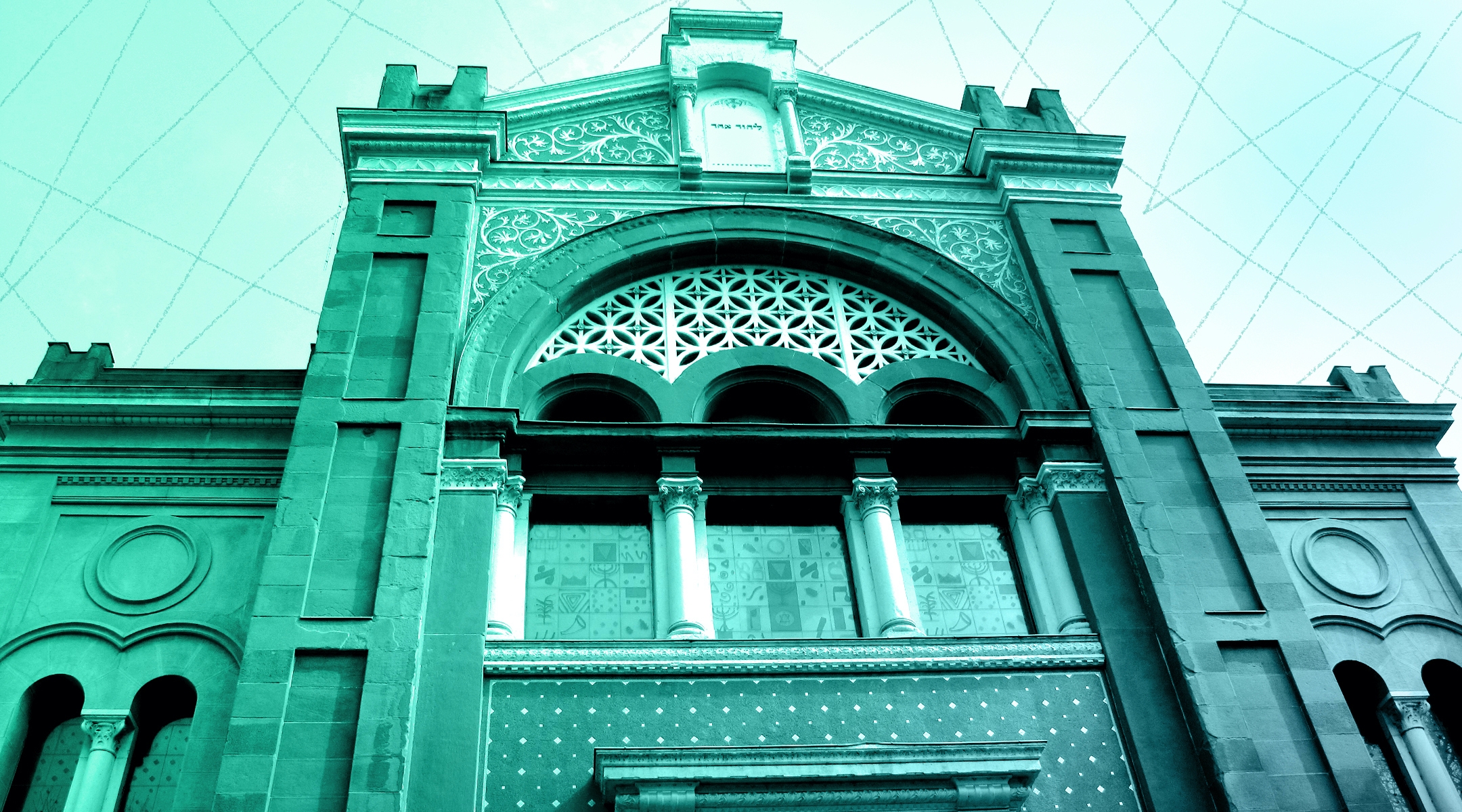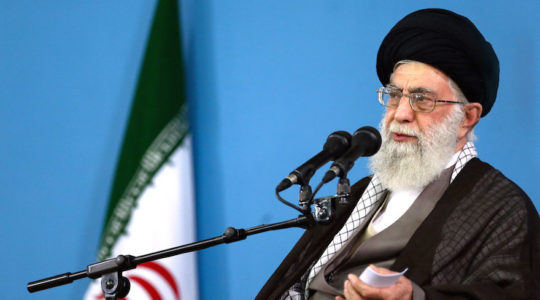AMSTERDAM (JTA) — In the United States, when Jews say they identify as part of the Jewish “community,” they are saying they belong to a broad cultural and religious framework. They could be referring to the community of Jews in their city, their state, the country at large or the world — and it doesn’t necessarily mean that they belong to a synagogue.
In Western Europe, that applies in some situations. In others, however, saying that one is part of a “Community” (capital C) carries different connotations. That’s because Jewish communities and congregations here are arranged in a system that is radically different than the one in the United States.
The European model is called Kultusgemeinde, German for “cultural community.” Most major cities have organizations called “communities” — for instance, the Jewish Community of Milan, the Jewish Community of Berlin and so on. Membership usually involves genealogical vetting and an annual fee that’s determined by income level. (For instance, belonging to the Jewish Community of Amsterdam, a nonprofit that deals with Jewish Orthodox affairs, on average costs over $600.)
Belonging to the communities comes with several tangible benefits, notably free access to Jewish schools in most countries with sizable Jewish populations. That typically costs American families tens of thousands of dollars.
But there are downsides to the model, too, including a culture of homogenization that leaves little room for religious innovation.
The U.S. equivalent would be belonging to the Jewish Community of Seattle, if that existed, instead of just a synagogue in the Washington city.
The decentralized American model and its Western European antithesis were born out of different historical circumstances and today have advantages and disadvantages that both shape and reflect some key differences of Jewish communal life in those parts of the world. Here’s what belonging to a European Jewish “Community” means.
The origins
The Kultusgemeinde model came about in the 19th century in Central Europe “because European governments wanted to oversee Jewish communities” in an organized way, said Sergio DellaPergola, an expert on Jewish demography at the Hebrew University of Jerusalem.
“It ended up being, at times, a pretty effective tool for Jewish communities to pursue their interests through their own elected leadership,” he said.
According to DellaPergola, who was born in Trieste, Italy, and raised as a member of the Jewish Community of Milan, the Kultusgemeinde model has allowed Jews to lobby governments effectively on core issues for centuries. It has helped them unite to successfully fight some attempts to curtail their religious freedoms; pool their communal resources in order to hire rabbis and other communal services; streamline fundraising; care for their poor; and make powerful political alliances, DellaPergola and other advocates of the European model said.
Some of the largest today are in places with large Jewish populations, such as Paris, London, Berlin and Amsterdam.
The nuts and bolts
Many Kultusgemeinde communities receive funding from their state or city governments, which tend to allocate those payments according to membership size. Being a state-recognized religious charity means a Community can receive tax-deductible donations. In Hungary and Italy, for example, taxpayers can choose one charity to which the government will transfer 1 percent of the sum it collects as income tax each year.
To become Kultusgemeinde members, applicants are vetted on their Jewishness. For Orthodox communities, applicants need to prove that their mothers are Jewish. In some cases, applicants also need to choose and commit to one synagogue in a given city under the Community’s jurisdiction.
Reform and Masorti congregations also operate on the Kultusgemeinde model in Europe. They are less strict regarding admissions, but they also have a vetting process.
Once in, members have access to communal facilities and services — things like a bris or a wedding chuppah cost less for members. Besides schools and synagogues, the communities can include other organizations such as JCCs, libraries, eateries and even individual media outlets. In France, for instance, the Consistoire, an organization set up in the 19th century by local Jews on the request of Napoleon Bonaparte, operates one of the world’s newest and glitziest community centers, the $17 million European Center of Judaism.
Operating outside the Kultusgemeinde model in relatively small Jewish communities means a huge disadvantage in terms of funding and recognition, said Emile Schrijver, a professor of Jewish book history at the University of Amsterdam and director of the city’s Jewish Cultural Quarter (a nongovernmental organization that is not a Kultusgemeinde, but serves as the umbrella structure for five Jewish museums and institutions).
The pros
The centralized model of organization can reap great benefits.
In the Netherlands and Belgium, Kultusgemeinde organs — the Belgian CCOJB and the Central Jewish Organization of the Netherlands — have served as legal entities that were necessary to fight proposed national bans on kosher slaughter, which would have dealt a major blow to observant communities. This fight succeeded in the Netherlands in 2012 and is currently being fought by the Belgian Kultusgemeinde community.
In France, where Napoleon essentially forced the Jews there to form the Kultusgemeinde-like Consistoire, that structure is now disseminating aid to help thousands of French Jews overcome the financial repercussions of the coronavirus crisis.
“The central design of the community means there is a clear address, in France’s case, for financial issues,” DellaPergola said, noting the Fonds Social Juif Unifié, or United Jewish Social Fund, where Jews can get assistance.
The Kultusgemeinde model also means that Western European Jews have chief rabbis who act as a supreme religious authorities and, at times, help give Jews a voice in social debates. In England, for example, Britain’s current and former chief rabbis (Ephraim Mirvis and Jonathan Sacks, respectively) have helped amplify the claims of anti-Semitism surrounding the Labour Party in national media, partially because of the authority that their title assumes.
Then there’s the free schooling.
Many European governments, including France, the Netherlands, the United Kingdom, Belgium and Italy, have agreed to allow religious Jewish schools to operate as public schools as long as they also teach the minimum required curriculum. This mixing of church and state has led to repeated clashes between education officials and Jewish faculty who critics say fail to teach such subjects as evolution and sexual education.
The cons (and costs)
In normal times, being a member of a Kultusgemeinde community can get expensive.
Even after paying several hundreds of dollars a year for membership — a tax-deductible expense in most European countries — additional substantial payments are required for rabbinical and other services at ceremonies such as weddings and bar and bat mitzvahs.
(The situation is different in the revived Jewish communities of post-communist Eastern Europe, where membership fees are mostly covered by external donations, government funding and Holocaust restitution funds.)
The model also has pitted multiple communities against each other for government recognition and funds and led to decades-long tensions between the “in crowd” and the “outsiders.” It’s even started legal battles.
In Hungary, a notable fight between two competing federations of Kultusgemeinden has gone on for years. It pits the Mazsihisz federation, which is largely Neolog, a local denomination akin to Masorti or Conservative, against EMIH, the Chabad-affiliated Orthodox federation of communities.
In Poland, a 2012 court ruling forced the Orthodox Jewish Community of Warsaw to allow in a non-Orthodox congregation called Ec Chaim. When the non-Orthodox congregation joined the Community, some local Reform Jews – a minority within the Jewish population of most European countries — dismissed Ec Chaim as a sham group meant only to give the illusion of inclusion while other non-Orthodox communities remained outside the umbrella.
“We are prone for infighting, and when you create a polity and give it leaders, they will become targets, increasing the impression of division,” DellaPergola said.
The model also disincentivizes attempts at modernization in many Western European communities — including the largest of them in France, where some 500,000 Jews live. That in turn alienates younger Jews, said Nigel Savage, who was born in Britain and is the CEO of Hazon, an environmental organization based in New York City.
Whether over the costs, or this sense of conservatism, the numbers show that the model is becoming less popular. In the Netherlands, where there are 45,000 Jews, less than a quarter are community members, whereas before the Holocaust about 75% of Dutch Jews were members, said Ruben Vis, the secretary-general of the Orthodox Organization of Jewish Communities in the Netherlands, or NIK.
In the United Kingdom, where 250,000 Jews live, a report from 2017 showed that only about 80,000 Jewish households, many of them older individuals, are registered members. That figure constituted a 20% decrease in membership from 1990.
The American influence
DellaPergola still favors the European model, in part because he believes the American alternative has been less successful at bringing Jews together over common causes.
“I think that attempts to achieve union end up increasing it, and that’s preferable to the chaos that defines Jewish communal life in the United States,” DellaPergola said.
That chaos, he says, is also costing U.S. Jewry money.
“In the American Jewish community there is crazy replication and overlaps, which arguably leads to a certain waste of money,” said Savage, who has lived in New York for 20 years. “At this point there are far too many synagogues and synagogue buildings, for example.”
But, he added, the adaptive freedom that Jewish communities have in the U.S. has led to “an explosion of creativity that’s being exported across the Jewish world.”
Savage referenced the establishment in 2018 of Adamah, the first Jewish environmental farm in the United Kingdom, styled after the successes of that growing movement in the U.S. The creation in 2013 of a modern Jewish community center in London also was inspired by New York institutions.
“In a world with so many interest groups and clubs competing for people to engage with them, the Kultusgemeinde needs to become a ‘community of values’ much like the American one,” Vis said. “I think that’s where we’re headed, like it or not.”
JTA has documented Jewish history in real-time for over a century. Keep our journalism strong by joining us in supporting independent, award-winning reporting.






